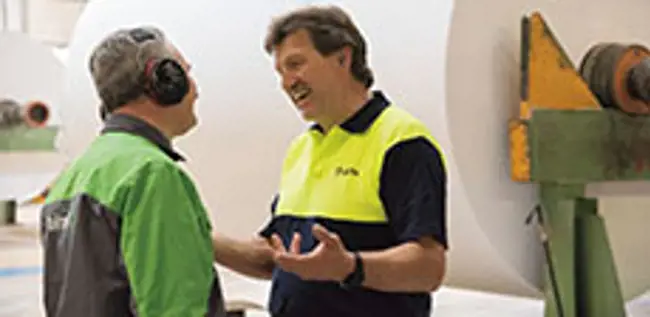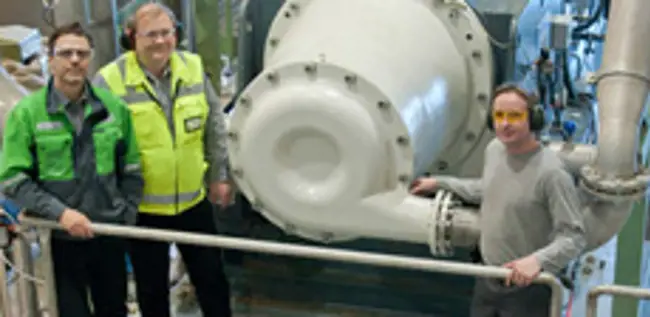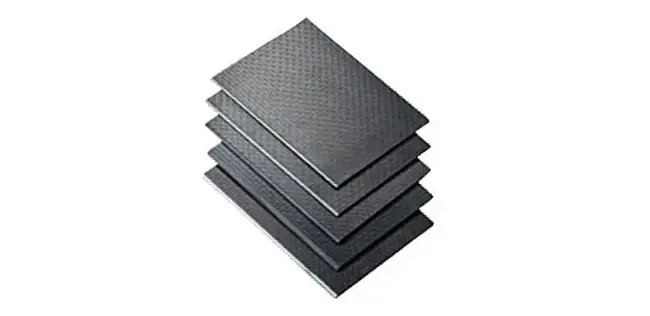Measurement forms the basis for energy efficiency
Dec 2, 2013
Saving energy is, fundamentally, quite simple: you reduce unnecessary consumption of energy and invest in more efficient technology. However, the manufacturing processes for paper and board are complicated and contain many different types of sub-processes. Each sub-process has its own characteristics, and it behaves differently when changes are made to production.

In board and paper machines, improving energy efficiency is a continuing process in which monitoring, measurement, and analysis all play important roles. The most important factors in improving the paper machine energy efficiency are constant measurement and active monitoring of energy consumption.
Benchmarking data is the basis for making savings
Today, new paper and board mills should be capable of providing fairly detailed information on energy consumption. In the best case, the process control system includes separate pages for energy consumption indicators together with a reporting function. However, there are many mills where energy consumption data is utilized poorly in process control, or the data is processed as averages, forgetting to emphasize the factors behind those figures.
The most important factor in measuring energy consumption is the relevance of the data collected and transforming it into clear indicators. The persons responsible for monitoring energy consumption must know the origin of the data and the boundaries of the processes under review. Energy consumption data is best utilized when used in everyday work in just the same way as other process parameters.
Benchmarking of liner machines, source Valmet* Energy Survey 2011
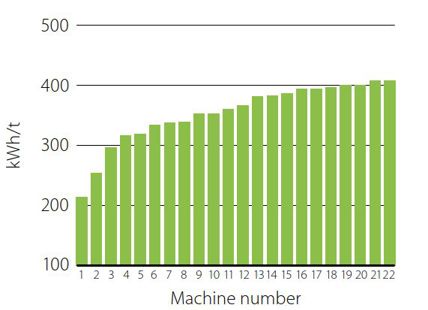
Figure 1. The figure shows a comparison of liner lines by specific electricity consumption.
The review of energy consumption should be started at the annual level. Valmet conducts an annual energy survey in connection with production surveys. The benchmarking show the energy consumption compared to other production lines producing the same grade. The relation of energy consumption and machine efficiency of different machine concepts has also been analyzed. If consumption exceeds the average for the reference group, it is strongly recommended that the possibilities for making energy savings are investigated; however, it should be noted that possibilities for improving energy efficiency can often also be found on production lines that are placed below the average.
The comparison is further refined when examining lines or machines that are technically of similar age and include similar sub-processes. It should be noted, however, that the comparison of energy consumption does not give any direct indication of how much or by what means the energy consumption of a particular line can be decreased. Even a new production line with state-of-the-art energy-efficient features can be operated inefficiently. Whereas, an old papermaking line can be surprisingly energy-efficient if its condition has been carefully maintained and the processes are run correctly.
Monthly averages an indicator of performance
Monthly averages of energy consumption provide a better and more detailed picture of energy use on a papermaking line than annual averages. It is not unusual for specific energy consumption and production efficiency to vary by month. Therefore, the monthly averages for one year offer enough data points to create correlations between energy consumption and production indicators. The examination is very simple to perform and, based on the monthly averages, the potential for improving a machine's performance can be assessed. In one sample case, a 5% improvement in overall efficiency was found to reduce specific electricity consumption by approximately 6%. On a relatively new fine paper line, this means an annual saving of EUR 360,000 in energy costs.
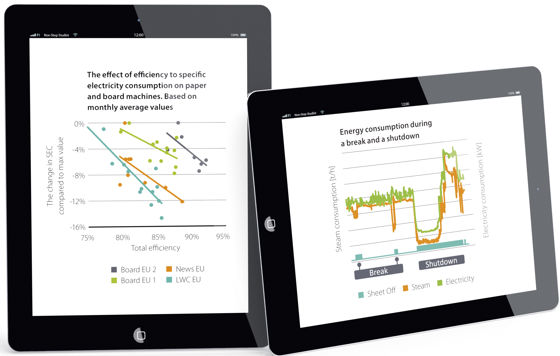
Figure 2. The correlation between specific electricity consumption and overall efficiency on the selected paper and board machines.
The correlation between efficiency values and energy consumption is particularly visible in electricity consumption. The papermaking process includes many devices that run at constant power regardless of the production speed. Near the design point of the machine, their share of electricity consumption is lowest, and also generally, as production increases, specific electricity consumption decreases. As a result, for the sake of energy efficiency, it is best to run the machine at maximum speed.
The number of breaks and unplanned shutdowns should be minimized. During breaks, electricity consumption often increases as the broke systems and tail threading equipment are on with the machine running at production speed. During shutdowns, only the most essential equipment should be kept running.
The most significant paper machine energy savings can be achieved through detailed measurement
In order to avoid a distorted interpretation of energy use in a process, the annual or monthly averages for energy consumption used for verifying energy savings should not be overly relied upon. If there is monthly variation in the efficiency of a machine, this is also reflected in its specific energy consumption. These changes can hide the impact of a single piece of equipment or a process change on energy consumption; in other words, the indication of potential savings is lost in the fluctuation of poorly selected indicators. When energy savings need to be examined or verified in a reliable manner, more detailed process data is required.
The best information on the operation of equipment and the possibilities for energy savings can be obtained from precise process data. In this case, the data for a short interval, such as a few weeks, is usually selected for examination. If constant monitoring is not performed, there is no way of knowing whether the selected sample is representative of a good or poor situation. Erroneous interpretations are minimized by including a sufficient number of production cycles in the examination and supplementing the analysis with measurements performed on-site.
Obtaining precise process data and investigating the correlations between variables are the only means of studying what actually happens during the process and what impact changes in process parameters have on energy consumption. Further, only by utilizing precise data can energy savings be verified reliably.
In practice, electric power is directly dependent on a machine's speed, while the basis weight affects steam consumption. Therefore, in terms of energy consumption, only those points where the speed and basis weight are the same can be compared. The creation of proper analyses requires powerful analysis tools and the use of statistical methods. The energy analyses performed by Metso are based on such methods and tools. In addition, the analysis of energy data actively supports Valmet's product development.
One example of utilizing process data is seen in decreasing the base load. During shutdown, the consumption of electricity and steam on the production line decreases. Process data can be used for finding out which equipment is active during the shutdown and calculating the potential savings. In one particular case, during an unplanned shutdown, a base load of up to 50% of the consumption during operation was measured. Typically, the base load is less than 20% of the normal electricity consumption. This means, for instance, if the share of unplanned shutdowns is 3%, simply decreasing the base load would yield annual savings of EUR 150,000.
Valmet's specialist services – a key to improved energy efficiency
Valmet offers versatile services for improving and managing energy efficiency in paper and board manufacturing. In addition to energy-saving equipment solutions, Valmet provides various types of energy analyses from those covering the entire production line to those targeting specific sub-processes. Every year, a production and energy consumption survey is carried out, which is a very popular tool for comparing energy consumption.
Energy saving projects should be started by performing an energy analysis covering the entire production line. Valmet's analyses always produce detailed reports and lists of recommended actions for improving energy efficiency. In addition, the energy analyses provide essential information on the operation of the line and the processes. Energy efficiency can be improved over the long-term through a Valmet cooperation agreement. Specific targets can be set for the agreement term to increase production and decrease energy consumption. Additionally, Valmet has process control tools for monitoring and reporting energy consumption.
In summary, information on energy consumption and process data provide excellent opportunities for verifying and monitoring energy savings. Measurements and monitoring are the keys to improved energy efficiency. Valmet's specialist services and efficient analysis tools, combined with our extensive process expertise, offer the best possibilities for utilizing energy data and saving energy in an effective manner.
(*Metso until Dec. 31, 2013)
Published in Results customer magazine 2/2013
Related articles
